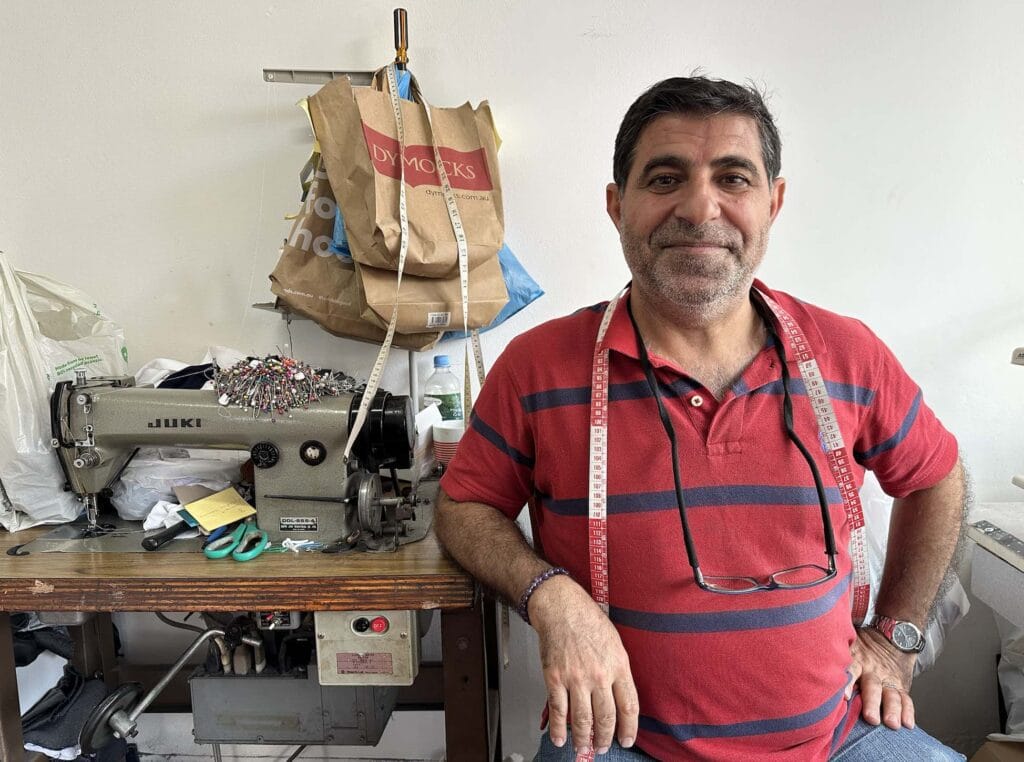Leading Tailor Perth Services: Tailoring Solutions for Perfect Fits
Leading Tailor Perth Services: Tailoring Solutions for Perfect Fits
Blog Article
Understanding the Tailoring Process: From Fabric Option to Final Suitable for the Suitable Closet
The tailoring process is an intricate interaction of art and science, beginning with the critical choice of fabric choice and culminating in the exact modifications of last fittings. Each textile type brings one-of-a-kind high qualities that affect not only the visual charm yet likewise the garment's long life and suitability for various occasions.
Significance of Textile Selection
Choosing the appropriate material is essential in the customizing process, as it straight influences the comfort, sturdiness, and overall visual of the final garment (tailor perth). The option of textile establishes the foundation for the garment's efficiency, performance, and style. Various textiles have one-of-a-kind properties, such as breathability, weight, and stretch, which can dramatically influence how the garment drapes and fits the body
Additionally, textile selection influences the garment's long life and simplicity of care. High-grade textiles can withstand wear and tear, keeping their look and framework gradually, while lower-quality materials may bring about pilling or fading. In addition, the best textile adds to the garment's capability to shift across periods and celebrations, thereby boosting convenience.
A customized piece made from a suitable fabric not just showcases craftsmanship but additionally raises the wearer's self-confidence. Understanding the subtleties of material selection is extremely important for any customizing venture. It ensures that the end product not just satisfies the aesthetic needs of the client but also aligns with practical requirements, thereby accomplishing a harmonious balance in between form and function in the customized wardrobe.
Sorts Of Fabrics and Their Usages
Recognizing the numerous kinds of fabrics readily available is crucial for making informed decisions throughout the tailoring procedure. Each fabric possesses one-of-a-kind characteristics that dictate its viability for particular garments and celebrations.
Its convenience enables it to be customized right into everything from t-shirts to outfits. Its all-natural flexibility helps garments maintain shape over time.
Silk exhibits high-end and is light-weight, making it perfect for eveningwear and delicate shirts; however, it calls for careful handling due to its delicacy. Bed linen, with its distinctive surface, is a preferred option for cozy environments, offering a crisp and ventilated feeling, but it wrinkles quickly, which may impact the garment's appearance.
Artificial textiles, such as polyester and nylon, offer durability and resistance to wrinkles, making them suitable for daily wear and active clothing. Understanding these fabric types and their properties permits better decision-making, guaranteeing that each tailored piece not only fits well but also straightens with the desired objective and celebration.
The Tailoring Methods Clarified
The art of customizing relies upon a selection of methods that transform textile right into well-fitted garments. Central to this procedure is pattern drafting, where a tailor produces design templates based upon the customer's measurements and preferred style. This initial step makes certain that the garment will fit the user appropriately prior to any reducing happens.
Once patterns are established, reducing methods enter play. Precision is extremely important as inaccuracies can bring about misfitting garments. Tailors commonly make use of different reducing methods, such as single-layer reducing for visit this website elaborate layouts and multiple-layer cutting for efficiency on typical patterns.
Basting is another vital strategy, permitting dressmakers to briefly sew material pieces with each other for a preliminary fitting. This technique provides the possibility to examine the drape and general shape prior to last sewing.
Seaming methods, including flat-felled joints and French seams, boost the garment's longevity and aesthetic allure. Tailors also use strategies such as interfacing and extra padding to offer structure and form to details areas, like collars and shoulders.
Finally, finishing methods, including hemming and side ending up, make sure the garment's long life while giving a polished appearance. With each other, these methods develop the foundation of reliable customizing, leading to beautiful, custom-fit clothing.
Fitting Modifications and Factors To Consider

Trick factors to consider consist of the shoulder fit, which should neither sag neither limit motion, and the sleeve size, which ought to permit comfortable arm movement while keeping a sleek look. Additionally, adjustments at the waistline can improve the silhouette, with alternatives to allow out or take in fabric as required.
The surge of trousers is an additional crucial factor; it must sit easily over the hips without triggering discomfort, permitting ease of movement. Hemming sizes for both trousers and skirts should reflect the user's recommended design while respecting percentages.

Maintaining Your Tailored Garments
Proper maintenance of tailored garments is important to protecting their fit and appearance gradually. To ensure long life, routine cleaning is critical. Always adhere to the care tag directions, which might advise dry cleaning for fragile materials or device washing for more long go to this website lasting materials. Stay clear of frequent laundering, as this can wear down the fabric and change the garment's form.
Storage is just as vital; use cushioned wall mounts for layers and coats to maintain shoulder structure, and shop trousers folded up nicely or hung to avoid creasing. Shield garments from direct sunshine, which can fade colors and damage fibers.
In addition, periodic inspections for small repair services can protect against bigger issues. Look for loosened buttons, tearing seams, or signs of moth damages, dealing with these problems immediately to preserve the garment's integrity.
Last but not least, think about seasonal turning. Using tailored items in moderation permits materials to recuperate, extending their life-span. By carrying out these maintenance approaches, you can make sure that your tailored garments continue to be as excellent as the day you first wore them, enhancing your ideal closet for years ahead.
Conclusion
The customizing process, incorporating fabric option, competent techniques, and specific fitting modifications, plays an essential duty in creating garments that boost both comfort and style. Each stage adds to the overall efficiency of the end product, guaranteeing that apparel not just fits well however additionally shows specific identity. Recognizing the importance of maintenance expands the life of customized garments, solidifying their value in a well-curated closet. A comprehensive method to customizing culminates in a confident and refined look.
Selecting the ideal material is vital in the customizing procedure, as it straight affects the comfort, longevity, and total visual of the last garment. The option of textile sets the foundation have a peek at this site for the garment's style, functionality, and performance. Different materials have unique residential or commercial properties, such as weight, stretch, and breathability, which can dramatically affect just how the garment drapes and fits the body.
The art of customizing counts on a variety of techniques that change fabric into well-fitted garments.The customizing process, encompassing textile option, skilled methods, and exact fitting adjustments, plays a vital function in producing garments that improve both convenience and style.
Report this page